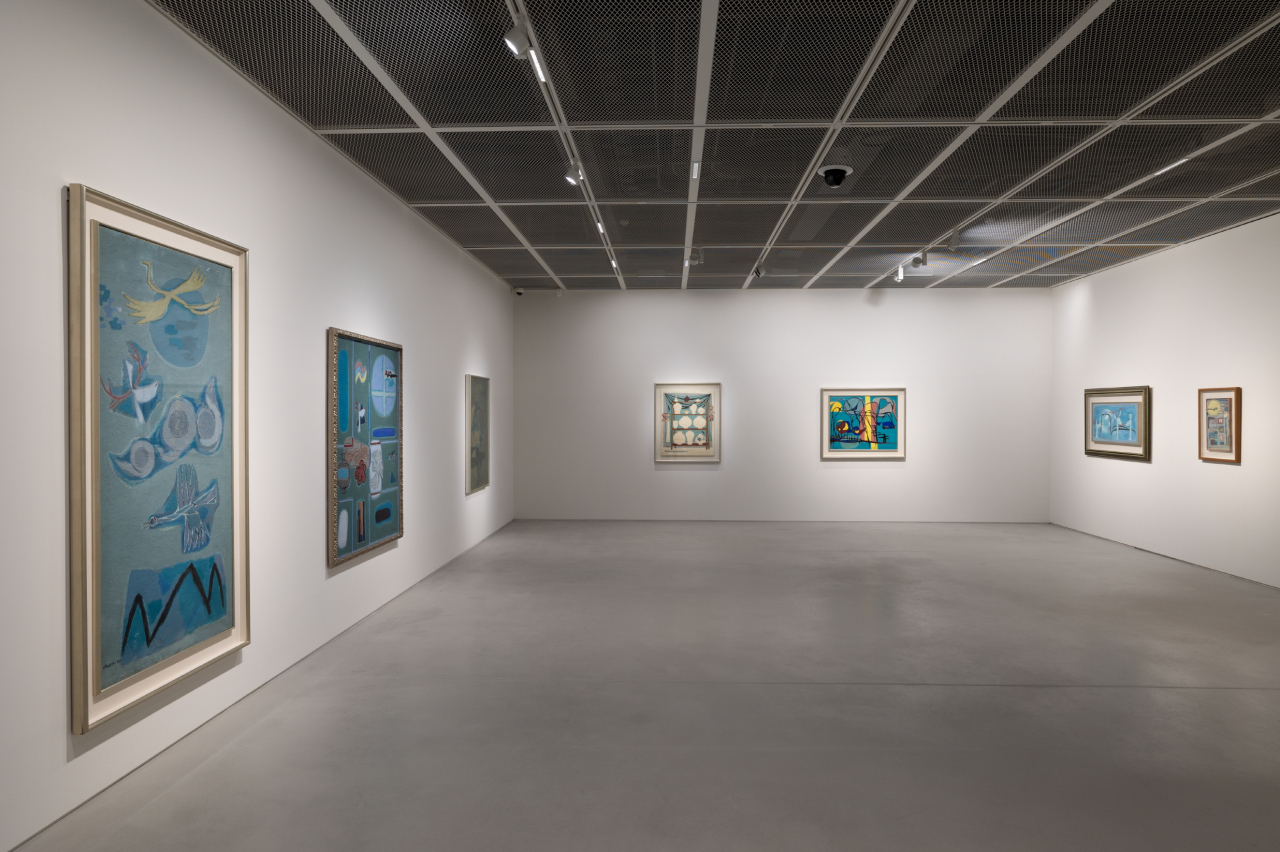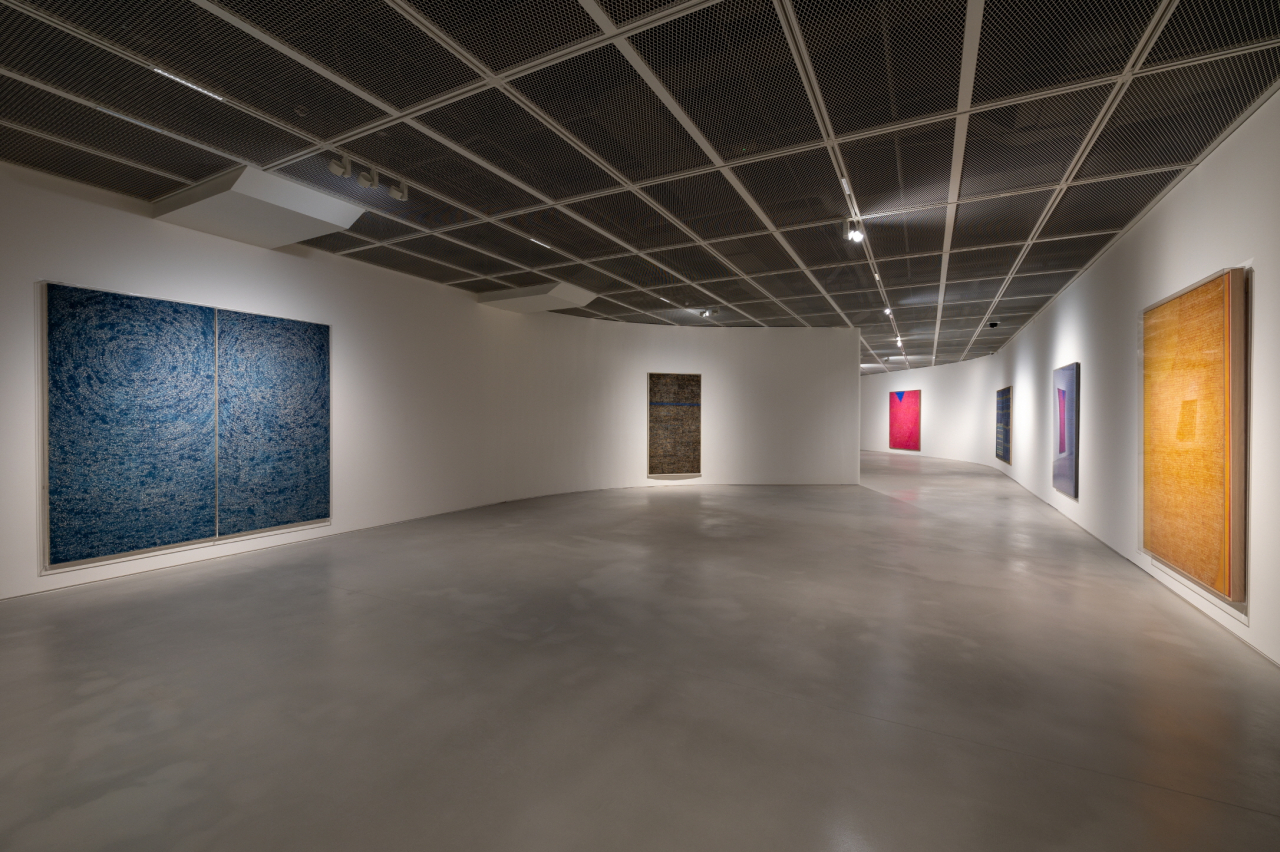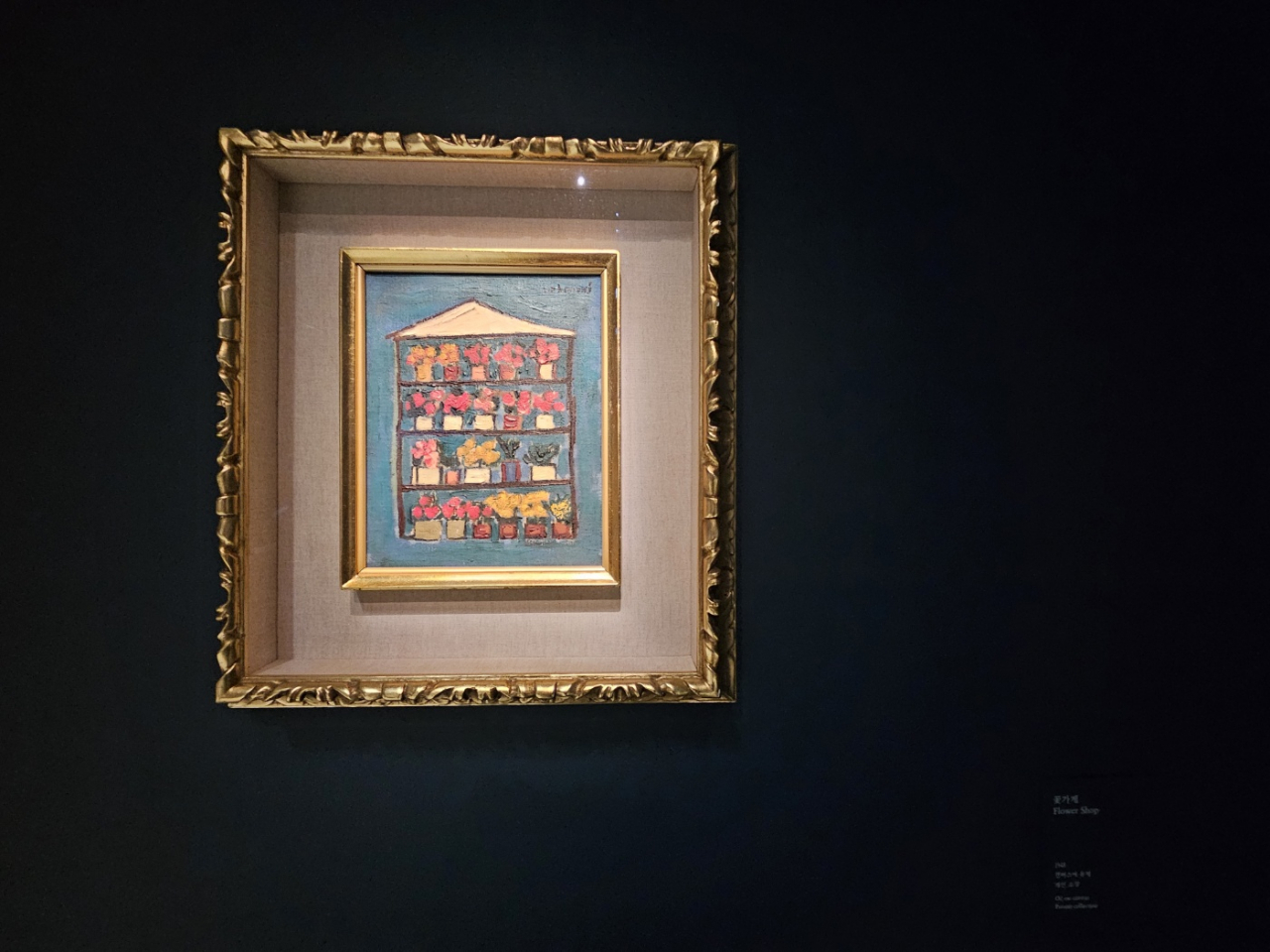Hoam Museum of Art reopens with abstract master Kim Whan-ki retrospective
By Park YunaPublished : May 17, 2023 - 09:52

Korea’s contemporary art master Kim Whan-ki (1913-1974) is well known for dense dot paintings that fill the entire canvas and his signature blue color. Following extensive renovations, the Hoam Museum of Art in Yongin, Gyeonggi Province, reopens Thursday with a large-scale retrospective of the artist.
The museum, run by Samsung Foundation of Culture and the Leeum Museum of Art, is reopening after an 18-month renovation. Such a retrospective of Kim's 40-year career is rare, although he is a well-known figure.

The Hoam Museum of Art brings together 120 of Kim's works, mostly oil paintings from private collectors and museums. The exhibition also includes some sketch drawings, letters written to his daughter and photographs from his youth, which are being shown to the public for the first time.
Encompassing Kim’s early works to his later dot paintings, the exhibition title, “a dot, a sky_kim whanki," is a reminder of how much the artist adored nature. The exhibition starts on the museum's second floor, showing Kim’s early works from the mid-1930s to the 1960s, including the paintings “Flower Shop,” “Rondo” and “Shanty.”

“The painting ‘Flower Shop’ is an early work that hints at Kim’s unique abstract style of painting. Kim attempted to paint things found easily around him abstractly,” said curator Tae Hyun-seon at the Leeum Museum of Art during a press tour on Monday.
“Some criticize Kim for romanticizing the horrors of war in his paintings. But, if you look at the painting ‘Shanty’ here, we can see Kim delivered the reality of the Korean War (1950-1953) in his own way,” Tae added.
Kim’s famous dot paintings -- which he started to explore in the mid-1960s -- unfold in the second part of the exhibition. Kim moved to New York in 1963 at the age of 50 to explore the global art scene and died in 1974 in the city. His paintings during this period are considered the pinnacle of his art, showing the development of Kim's artistic language.

"Some may have heard Kim was inspired by Pablo Picasso, but Kim also admired French artist Georges Rouault. Kim's paintings have some similarities with those by Rouault in their composition and matiere texture," Tae said.
The agony, loneliness and joy that the artist might have felt, constantly painting dots and lines all over the canvas, are delivered through quotes from Kim’s diary that are displayed along with the paintings.
“It looks (like) I have to endure loneliness. I will just think of art,” an excerpt from a diary entry on Jan. 2, 1970, reads.
Blue, yellow and red dot paintings are reminiscent of nature, such as the deep blue ocean or sunlight. The artist was born in a small rural town in South Jeolla Province surrounded by the sea.

Toward the end of the exhibition, black and grey dot paintings take over as if Kim was hinting at his imminent death. His paintings from 1974 are a pivot from the colorful paintings of his previous years. He suffered a stroke and was admitted to a hospital in New York on July 7, 1974, and died July 25 at the age of 61.
The exhibition runs through Sept. 10 and requires online reservation.
The Hoam Museum of Art was established in 1982 by Samsung founder Lee Byung-chul to house Lee's traditional Korean art collection. The garden at the museum, Hee Won, is known as one of the best representations of traditional Korean gardens.




















![[Today’s K-pop] BTS pop-up event to come to Seoul](http://res.heraldm.com/phpwas/restmb_idxmake.php?idx=642&simg=/content/image/2024/04/17/20240417050734_0.jpg&u=)